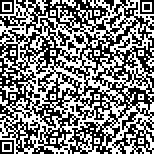下载中心
优秀审稿专家
优秀论文
相关链接
首页 > , Vol. , Issue () : -
摘要

| 作者 | 单位 | 邮编 |
| 黄然 | 杭州电子科技大学 自动化学院人工智能学院 | 310018 |
| 黄健熙* | 中国农业大学 土地科学与技术学院 | 100083 |
| 张超 | 中国农业大学 土地科学与技术学院 | |
| 郭春明 | 吉林省气象科学研究所 | |
| 庄立伟 | 国家气象中心 | |
| 吴开华 | 杭州电子科技大学 自动化学院人工智能学院 | |
| 张竞成 | 杭州电子科技大学 自动化学院人工智能学院 | |
| 张垚 | 杭州电子科技大学 自动化学院人工智能学院 |
低温冷害是影响东北玉米生长发育及产量形成的主要气象灾害。以东北地区为研究区,利用2003到2015年的MODIS (Moderate Resolution Imaging Spectroradiometer)陆地表面温度(land surface temperature,简称LST)数据产品、植被指数(vegetation index, 简称VI)数据产品与气象站点观测的日平均气温数据,构建以LST、VI和太阳赤纬(Ds)为自变量的日平均气温估算模型;并结合时空数据融合方法,完成覆盖研究区的逐日的1km空间分辨率的日平均气温数据集;逐年计算≥10℃的积温;结合玉米障碍型低温冷害指标和延迟型冷害指标,开展研究区2003年到2015年研究区玉米低温冷害遥感监测。监测结果显示,本研究区在2003年、2005年、2006年、2009年和2011年遭受大范围的延迟型低温冷害,与相关文献和农业农村部种植业司玉米单产数据分析对比结果表明,玉米障碍型低温冷害和延迟型低温冷害遥感监测结果与实际情况相符。
Nowadays, corn has become one of the most important crops in China. This paper’s study area, including Jilin Province, Liaoning Province, Heilongjiang Province and the four eastern cities of Inner Mongolia Autonomous Region (Hulun Buir, Tongliao, Chifeng and Xing"an League) is the most important corn production area., and also located at the northern limit of maize planting area. And the temporal and spatial distribution of chilling damage is highly important to increase yield and quality. The objective of this paper is to integrate MODIS and meteorological data to monitoring corn chilling damage in Northeast China and the algorithm is computed in two steps. In the first step, the remote sensing estimation model of air temperature were established, and in the second step, the sterile-type chilling damage and delayed-type chilling damage on corn were monitored base on the full covered daily mean air temperature and the corn chilling damage indicator. Satellite data, including LST, EVI and quality control data derived from TERRA/AQUA -MODIS, and ground based data, including daily mean air temperature and phenological data observed by 234 meteorological stations, from 2003 to 2015 were collected to data analyzing, image processing, and mapping. The remote sensing estimation model of air temperature were established by multi-variated linear regression using cloud-free pixels’ MODIS LST, EVI and solar declination as independent variables and daily mean air temperature observed by meteorological stations were used as dependent variable. The meteorological stations were divided into two parts according to the coordinates. Daily mean air temperature measured by two thirds of station (156) from 2003 to 2013 were used to establish the daily average temperature estimation model and the remaining data includes the observations of 78 meteorological stations from 2003 to 2013 and the observation data of all stations in 2014 and 2015 are used for the validate the model. The MODIS EVI production is the 16day composited production. S-G filter with max were used to achieve daily EVI. The cloud-free pixels’ air temperature was calculated with estimated models using TERRA and AQUA daytime and nighttime data, respectively. Then the TERRA and AQUA daytime and nighttime derived daily mean air temperature data were merged based on the R2 and RMSE to increase spatial cloud-free data. The validation results show that the models using TERRA or AQUA night LST data as predictors outperform those using daytime LST as predictors. A framework was proposed for the air temperature data fusion. The data fusion framework is based the fact that the MODIS TERRA and AQUA can provide day and night time LST and the merge of these data can increase spatial coverage. The daily mean air temperature dataset covering the whole study area with 1km spatial resolution from 2003 to 2015 was completed based on the retrieval models and the data fusion framework. This study provided a remote sensing monitoring method of sterile-type chilling damage and delayed-type chilling damage on corn. Low daily mean air temperature and its last days are the maize sterile-type chilling damage indicator. Corn sterile-type chilling damage was identified by integrating the corn chilling damage indicator and the daily mean air temperature data set. The result showed there were corn sterile-type chilling damage in 2003, 2006 and 2012. These were consistent with the meteorological observation. This research can be used to monitor the process of maize sterile-type chilling damage, take abatement measures to mitigate corn sterile-type chilling damage, and reduce disaster losses. Based on the full coverage daily mean air temperature dataset, the accumulated temperature of ≥10℃ from 2003 to 2015 were calculated. Combines with the indicators of delayed-type chilling damage on corn, the study area suffered from widespread delayed-type chilling damage in 2003, 2005, 2006, 2009 and 2011. Compared with the observation of meteorological stations, the results of this research match the actual situation.

